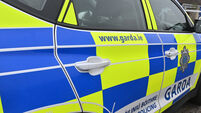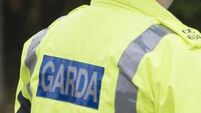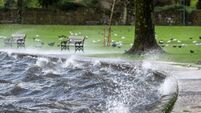Call to relieve special school principals of teaching duty

The principals of nearly 20 special schools with large staff should no longer also have to teach classes, TDs and senators have been told.
The case was made by the Irish Primary Principals Network (IPPN), which said 18 of 137 special schools are led by teaching principals.
The Oireachtas Education Committee heard that more time free from teaching duties for the 57% of primary school leaders who have their own classes is the top issue for all principals.
IPPN chief executive Páiric Clerkin said the position of teaching principals in special schools was a very critical situation, as they have multiples of the staff of most other schools.
“It’s hugely important we acknowledge the leaders of special schools and the very complex situation they’re dealing with as teaching principals,” he said.
As well as teaching staff, Mr Clerkin said special schools are allocated nurses, occupational therapists, and others that are not taken into account when the status of the principal is decided.
Because of the complexities of the role, with many also catering for pupils of primary and second-level ages, the IPPN is seeking to have the principals of all special schools automatically designated as administrative principals who can focus full-time on running their schools.
The principals of almost 2,000 primary schools with less than 177 pupils are full-time teachers, with between 17 and 29 days a year that their schools can pay a substitute to take their classes while they focus on administrative duties.
The IPPN and the recently-formed National Principals’ Forum are pushing for that allocation to be increased to one day a week during the 36-week school year.
They highlighted the staffing variations between schools that go well beyond pupil and mainstream teacher numbers used by the Department of Education to determine whether they are led by a teaching or administrative principal.
Mr Clerkin said some schools have three teachers, including the principal, and a part-time secretary, but another with the same number of class teachers might also have a resource teacher, learning support teacher, four special needs assistants, (SNAs), and other staff.
“They are also considered a three-teacher school, even though there are more than nine staff in the school,” said Mr Clerkin. “They are not equal, but they get the same resources. It is fundamentally unfair.”
Forum representative Angela Dunne said she has 23 staff to manage in what is seen by the department as a four-teacher school. She leads the team at Loughmore National School in Co Tipperary, which has two autism classes, two special education teachers and 10 SNAs.
“We have a high level of special educational needs in mainstream and pride ourselves on inclusivity,” she said. “But I’d be lying if I said the effort involved isn’t excessive sometimes.”
Ms Dunne said she had 10 extra administrative days when the autism classes were being set up, but those extra days were later taken from schools like hers.












